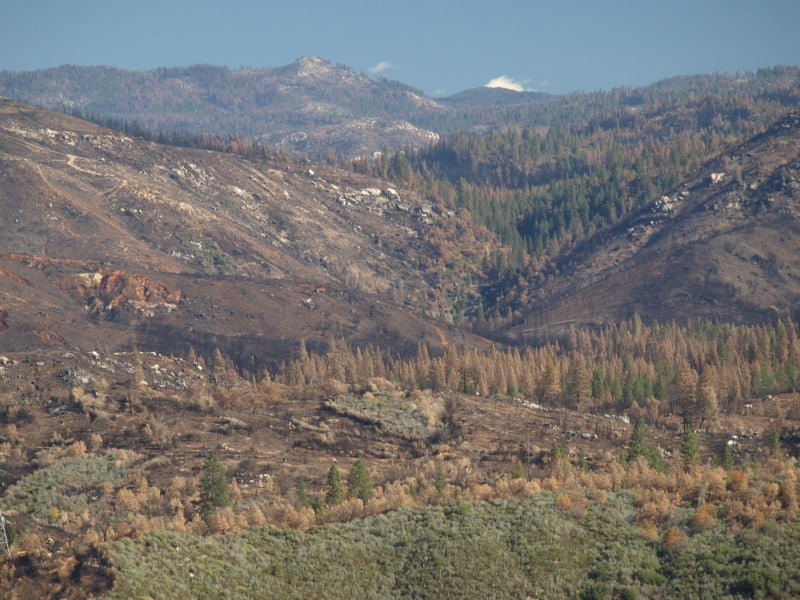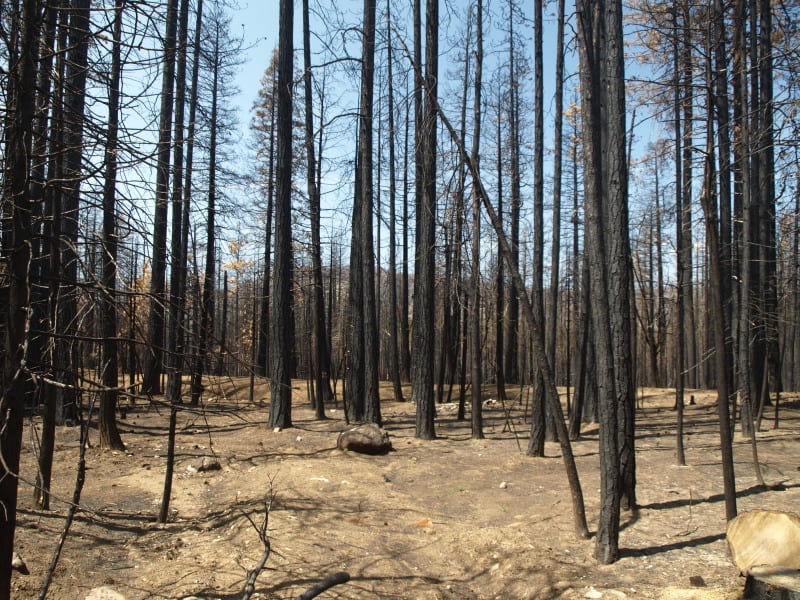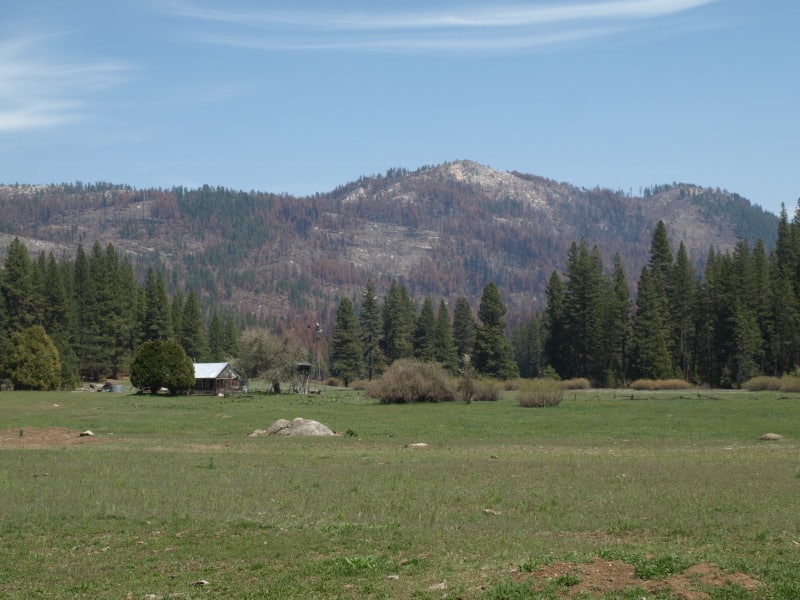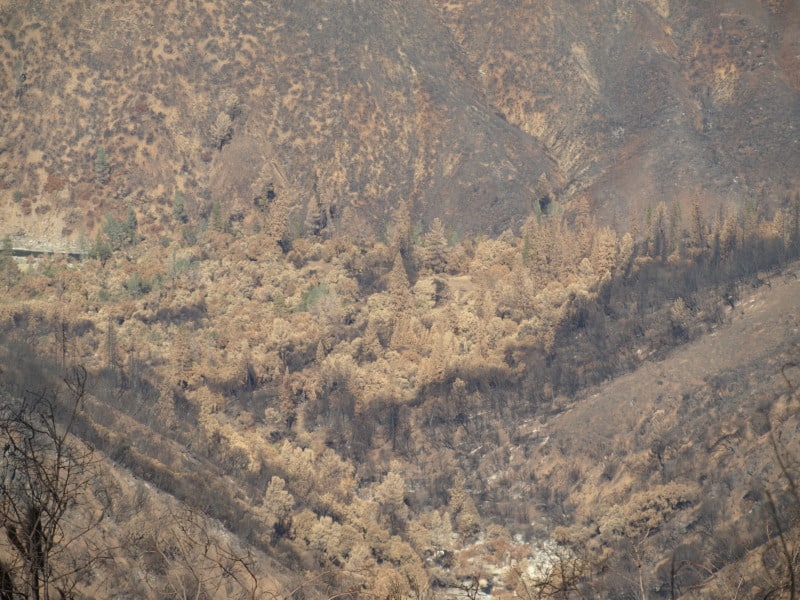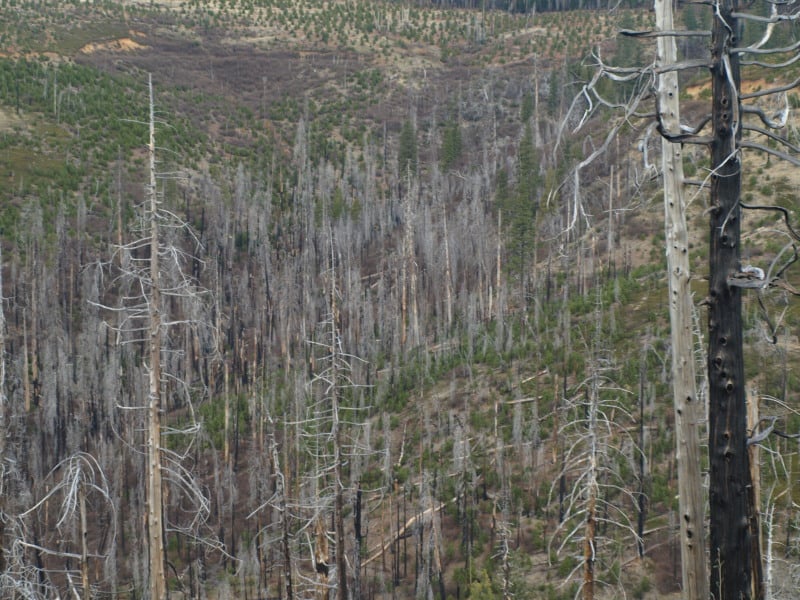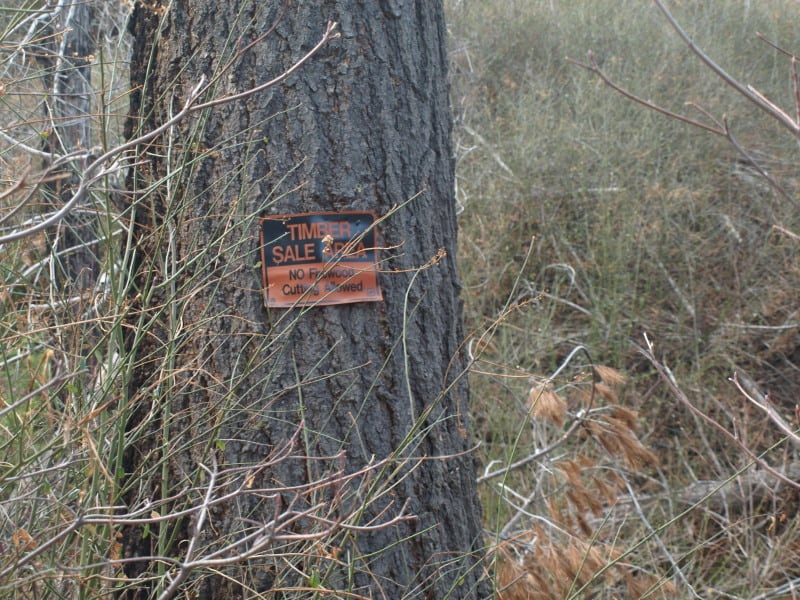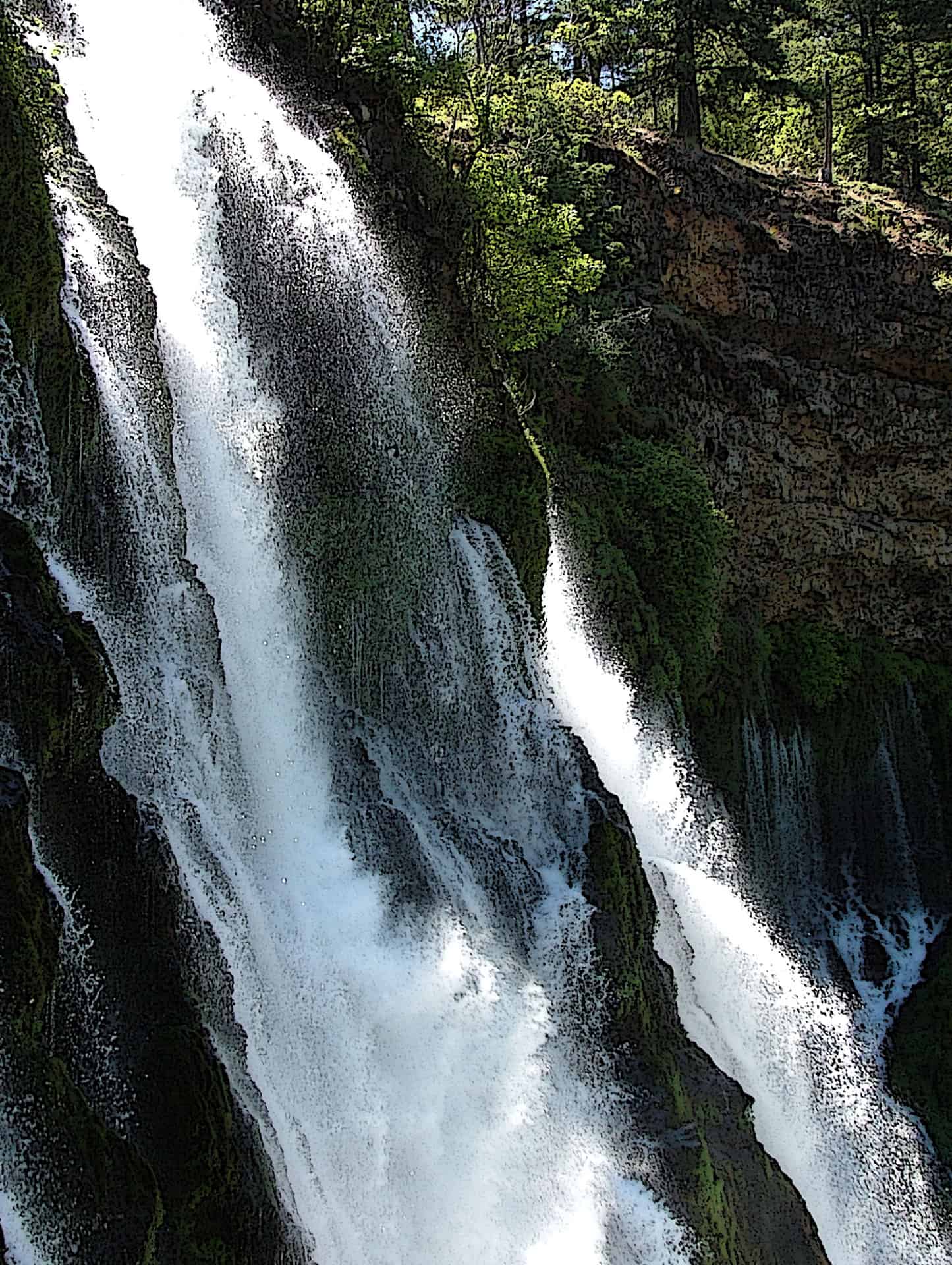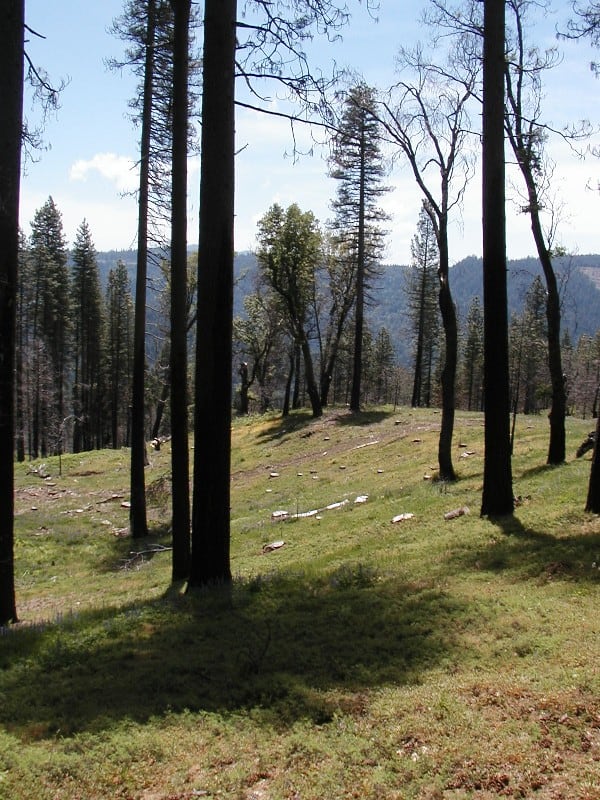Greg asked why we should bother with salvage logging on the Rim Fire, and I tried to explain how bear clover would dominate landscapes. He also seemed confused about modern salvage projects, here in California. Everything, here in California, is fuels-driven, as wildfires happen up to 13 times per century, in some places in the Sierra Nevada.
This picture shows how dense the bear clover can be, blocking some of the germination and growth of conifer species. Additionally, bear clover is extremely flammable and oily, leading to re-burns. This project also included removing unmerchantable fuels, including leaving branches attached. Yes, it was truly a “fuels reduction project”. You might also notice how many trees died, from bark beetles, after this salvage sale was completed. Certainly, blackbacked woodpeckers can live here, despite the salvage logging. Hanson and the Ninth Circuit Court stopped other salvage sales in this project, in favor of the BBW.
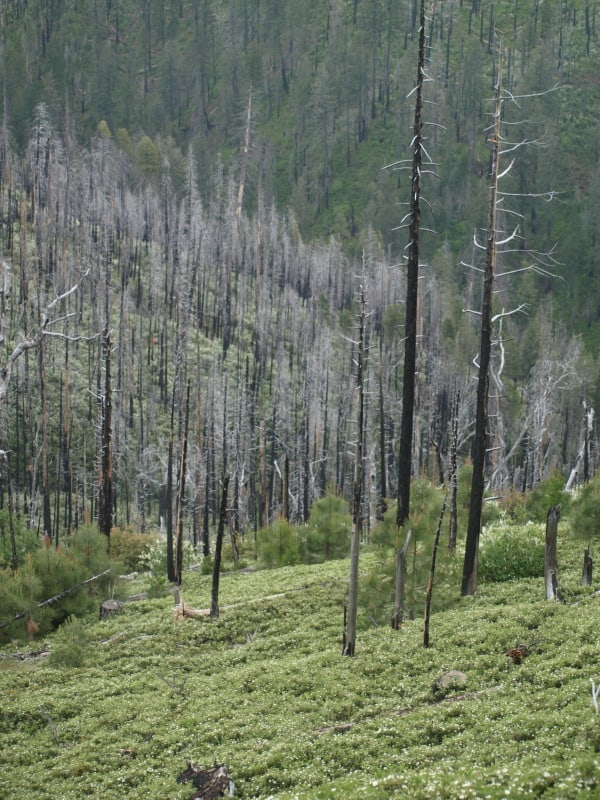
When you combine this bear clover with a lack of fire salvage and chaparral brush, you end up with everything you need for a catastrophic, soils-damaging re-burn and enhanced erosion, which will impact long term recovery and the re-establishment of large tree forests. Actually, there has already been a re-burn within this project since salvage operations in 2006. Salvage logging greatly reduced that fire’s intensity, as it slicked-off the bear clover, but stayed on the ground. Certainly, if the area hadn’t been salvaged, those large amounts of fuels would have led to a much different outcome.
Now, if we apply these lessons to the Rim Fire, we can see how a lack of salvage in some areas within the Rim Fire will lead to enhanced future fires, and more soils damages and brushfields. When the Granite Fire was salvaged in the early 70’s, large areas were left “to recover on their own”, in favor of wildlife and other supposed “values”. When I worked on plantation thinning units there, those areas were 30 year old brushfields, with manzanita and ceanothus up to eight feet high. Those brushfields burned at moderate intensity, according to the burn severity map. Certainly, there were remnant logs left covered by those brushfields, leading to the higher burn severity. It was the exact same situation in my Yosemite Meadow Fire example, which as you could see by the pictures, did massive damage to the landscape, greatly affecting long term recovery. Here is the link to a view of one of those Rim Fire brushfields, surrounded by thinned plantations.
https://maps.google.com/maps?hl=en&ll=37.999904,-119.948199&spn=0.003792,0.008256&t=h&z=18
I’ve been waiting to get into this area but, I expect the fire area will remain closed until next year. The plantations were thinned and I hear that some of them did have some survival, despite drought conditions and high winds, during the wildfire. In this part of California, fuels are the critical factor in wildfire severity. Indians knew this, after thousands of years of experience. They knew how to “grow” old growth forests, dedicating substantial amounts of time and energy to “manage” their fuels for their own survival, safety and prosperity. Their preferred forest included old growth pines, large oak trees, very little other understory trees, and thick bear clover. Since wildfires in our modern world are a given, burning about every 20 to 40 years, we cannot be “preserving” fuels for the next inevitable wildfire.
We need to be able to burn these forests, without causing the overstory pines to die from cambium kill, or bark beetles. That simply cannot be done when unsalvaged fuels choke the landscape. We MUST intervene in the Rim Fire, to reduce the fuels for the next inevitable wildfire that WILL come, whether it is “natural”, or human-caused. “Protected” old growth endangered species habitats may now become “protected” fuels-choked brushfields, ready for the next catastrophic wildfire, without some “snag thinning”. We cannot just let “whatever happens”, happen, and the Rim Fire is a perfect example of “whatever happens”. Shouldn’t we be planning and acting to reduce those impacts, including the extreme costs of putting the Rim Fire out, and other significant human costs? Re-burns are a reality we cannot ignore, and doing nothing is unacceptable. Yes, much of the fire doesn’t have worthwhile salvage volumes, and that is OK but, there are less controversial salvage efforts we can and should be accomplishing.
Here is an example of salvage and bear clover, six months after logging with ground-based equipment. This looks like it will survive future wildfires. You can barely even see the stumps, today! The bear clover has covered them.

